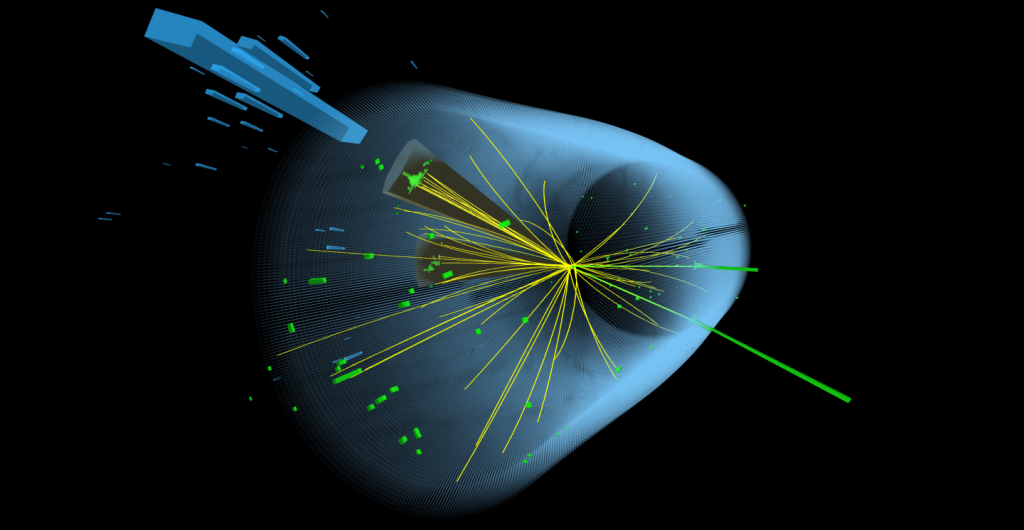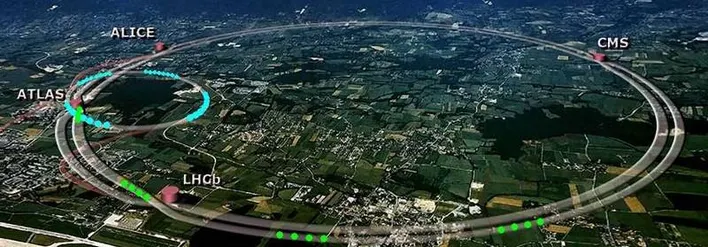Your cart is currently empty!

Title: Unveiling the Higgs Boson: The Particle That Gives Mass and the Role of the CERN Large Hadron Collider
Introduction
The discovery of the Higgs boson stands as one of the most significant milestones in modern physics. Often called the “God particle,” the Higgs boson is a fundamental particle associated with the Higgs field, which explains why other particles have mass. This breakthrough was achieved through experiments conducted at the CERN Large Hadron Collider (LHC), the world’s largest and most powerful particle accelerator. In this blog post, we will explore the Higgs boson in detail, its importance in the Standard Model of particle physics, and the pivotal role played by the CERN LHC in its discovery.
What is the Higgs Boson?
The Higgs boson is a subatomic particle predicted by the Standard Model of particle physics. The Standard Model describes the fundamental particles and forces that make up the universe, but for many years it had a missing piece: an explanation for why particles have mass.
This gap was filled in 1964 when physicist Peter Higgs and others proposed the existence of the Higgs field, an invisible energy field permeating all space. According to this theory, particles gain mass by interacting with the Higgs field. The Higgs boson is a quantized manifestation — or particle — of this field.
Why is the Higgs Boson Important?
The Higgs boson’s discovery confirms the mechanism through which particles acquire mass. Without mass, particles like electrons and quarks would simply move at the speed of light and could not form atoms, molecules, or the matter that makes up stars, planets, and life as we know it.
Confirming the existence of the Higgs boson also validates the Standard Model, one of the most successful theories in physics. It helps scientists understand the fundamental structure of the universe and lays the groundwork for exploring new physics beyond the Standard Model, such as dark matter and quantum gravity.
The CERN Large Hadron Collider (LHC)
The discovery of the Higgs boson was made possible by the CERN Large Hadron Collider, located near Geneva, Switzerland. The LHC is the world’s largest and highest-energy particle accelerator, spanning a 27-kilometer circular tunnel buried underground.
How the LHC Works:
- Particle Acceleration: The LHC accelerates two beams of protons to nearly the speed of light in opposite directions.
- Collision: These beams collide at extremely high energies, creating conditions similar to those just after the Big Bang.
- Detection: Sophisticated detectors surrounding the collision points record the resulting particle interactions.
- Data Analysis: Scientists analyze the vast amounts of data to search for rare particles like the Higgs boson.
The Road to Discovery
From 2010 to 2012, the LHC conducted high-energy proton-proton collisions to hunt for the Higgs boson. On July 4, 2012, CERN announced the discovery of a new particle consistent with the Higgs boson, a finding recognized by the 2013 Nobel Prize in Physics awarded to Peter Higgs and François Englert.
Implications and Future Research
The discovery opened new avenues in particle physics, confirming the Higgs mechanism and encouraging further study of the Higgs boson’s properties. Researchers continue to investigate whether there are multiple Higgs bosons or if the particle behaves as predicted by the Standard Model.
The LHC is also being upgraded to increase its collision energies and luminosity, allowing for even more precise measurements and the potential discovery of new physics phenomena.
Conclusion
The Higgs boson is a cornerstone of our understanding of the universe, providing the key to why particles have mass and thus why matter exists in its current form. The CERN Large Hadron Collider played an indispensable role in this discovery, pushing the boundaries of technology and human knowledge. As we continue to explore the subatomic world, the Higgs boson and the LHC remain central to uncovering the mysteries of the cosmos.
Here’s a little science joke to lighten your day
A Higgs-Boson walks into a church, the priest says “We don’t allow Higgs-Bosons in here.”. The Higgs-Boson says “But without me Father, how can you have mass?”


Leave a Reply